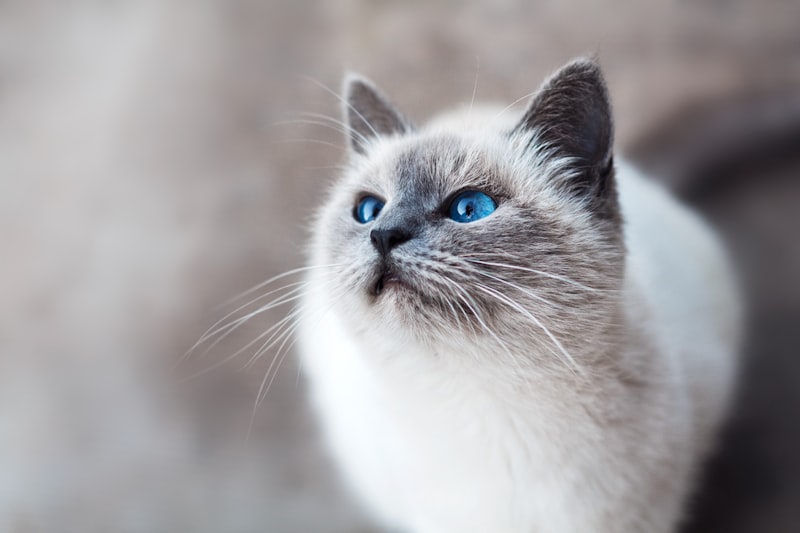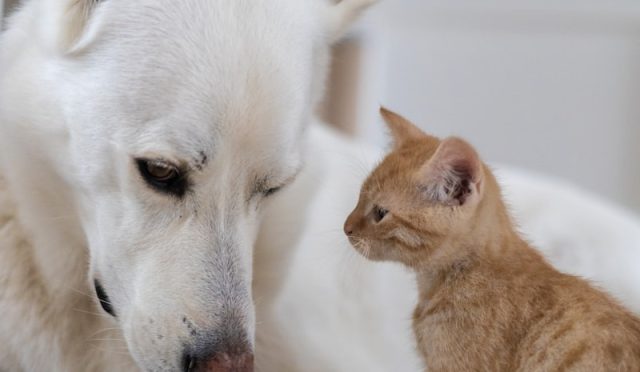Now, let’s talk about that slow blink your cat gives you—it’s not just a quirky habit. When your kitty slowly blinks at you, it’s like they’re saying, “Hey, I trust you.” It’s their way of communicating affection, almost like a feline kiss! So next time your kitty gazes at you with those big, soulful eyes and takes a leisurely blink, return the favor and see how they might purr with delight.
And what about that infamous cat kneading behavior? It’s adorable when they push their paws in and out on soft surfaces. This “kneading” hearkens back to their kittenhood, when they kneaded their mother’s belly to stimulate milk flow. So, when your cat does this, they’re not just getting comfy; they’re channeling nostalgic vibes from their baby days.
Then, there are those moments when they seem to stare blankly into space. Are they plotting world domination? Nah, they’re probably just daydreaming, perhaps about their next big hunting adventure or that elusive red dot from a laser pointer. Cats have an innate curiosity, and their minds often wander to explore the fascinating world around them.
Understanding these quirky behaviors enhances your bond with your cat. It turns everyday moments into a magical experience, making you both feel more connected. So, keep observing, and soon enough, you’ll become fluent in the language of your furry companion!
Decoding the Purr: What Your Cat’s Sounds Really Mean
Let’s talk about that signature purr. It’s often associated with contentment, but hold your horses! Not every purr is a sign of happiness. Sometimes, a cat might purr when they’re anxious or in pain, almost like a self-soothing technique. Imagine a child humming a lullaby to calm down—cats do a similar thing but with a purr. So next time your kitty curls up next to you and starts purring, pay attention to their body language as well.

Now, what about those chirps and trills? If your cat suddenly bursts into a chorus of soft chatters, it might be their way of expressing excitement or even frustration. Picture this: they’ve spotted a bird outside, and they’re just a little too eager about it. This specific sound often conveys their hunting instincts kicking in, showcasing their inner predator.
And then, let’s not forget the infamous “meow.” Cats reserve this vocalization almost exclusively for humans. If your cat is meowing at you with that slightly desperate tone, it’s almost like they’re trying to tell you, “Hey, human! I need something!” In contrast, a short, quick meow might be their polite way of saying, “What’s up?”
Why Does My Cat Stare? Unraveling the Mystery Behind Feline Gazes
First off, cats are natural hunters. When they’re staring, they’re often in full-on predator mode, eyes locked on potential prey—be it a bug buzzing around or even just a shadow flitting by. Their intense gaze helps them with focus, honing in on their target like a skilled archer. Think of it this way: it’s like you sitting completely still while fixated on that last piece of pizza in the fridge, holding back your excitement.
But it’s not just about hunting. Cats are also fantastic observers. They’re soaking in their surroundings, curious about everything. A cat’s stare can be a window into their mind, showing their fascination and wonder. It’s like keeping score in a game where they’re the only player, always calculating the next move in a world full of surprises.
Now, let’s not forget about communication. Cats can’t exactly verbalize their feelings, but a stare can speak volumes. When they’re looking at you lovingly, they might be saying, “Hey there, human, I adore you!” It’s a form of social bonding, much like when we catch a friend’s eye across a crowded room and share a knowing smile.
From Kneading to Head-Butting: The Secret Language of Cats Explained
Now, let’s shift gears a bit. Head-butting, or “bunting,” as some experts like to call it, carries a different message. When your furry friend butts heads with you, it’s their way of saying, “You’re part of my crew!” It’s like a kitty high-five, a gesture of affection and trust. Think about it—cats have scent glands on their foreheads, so when they rub against you, they’re leaving their mark, essentially claiming you as their own. Who knew cats were such possessive little creatures?
And then there’s the purring. Ahh, the purr! That soft, vibrating sound can mean a lot of things, from sheer contentment to signaling they feel a bit under the weather. It’s like their very own comfort blanket, soothing not just themselves but anyone lucky enough to be nearby.
The Science of Catnip: Why Your Feline Friend Goes Crazy for It

First off, catnip, or Nepeta cataria as the scientists call it, is part of the mint family. It boasts a compound called nepetalactone, which is responsible for that crazy behavior we all know and love. When inhaled, this powerful little compound binds to receptors in your cat’s nose and sends them straight to cloud nine. It’s like getting a catnip high but without any harmful side effects!
Interestingly, not all cats respond to catnip. About 50% to 70% of felines have a genetic sensitivity to it, meaning they’re the lucky ones who get to experience the fun. If your kitty isn’t one of them, don’t worry! It’s like being the sibling who’s not into roller coasters while everyone else is screaming with joy; it doesn’t make them any less of a cat!
The effects typically last around 10 minutes, after which your cat will likely take a little catnap to recharge before diving back into the wild world of catnip again. During this time, don’t be surprised if they roll, pounce, or even zone out—each cat reacts differently! It’s a bit like a furry rave, complete with body rolls and epic leaps.






